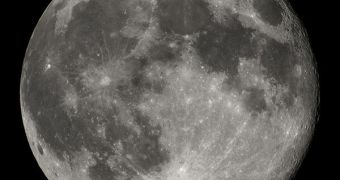The Giant Impact Hypothesis (GIH) is the main theory we have at this point about how the Moon formed. It is generally agreed upon by astronomers and planetary scientists, although alternative explanations about how our faithful companion appeared have been set forth over the years. At this point, a new idea is gaining increasing support in the scientific community. It states that the satellite formed as a result of a runaway nuclear georeactor in the Earth's mantle, Technology Review reports.
The GIH is a very straightforward theory for lunar formation. It states that, in the early stages of the solar system, as our planet was not fully solidified, a massive impact occurred. A protoplanetary body, or even a space rock as large as Mars, slammed into the early form of our planet, splitting it in two, uneven parts. One of these parts would solidify to become the Earth we know today, whereas the other would coalesce into the Moon, and become tidally locked with out planet. According to computer simulations of this scenario, 80 percent of the Moon comes from the object that hit the early Earth.
But this idea is hard to reconcile with the fact that rocks brought back from the Moon appear to contain a roughly equivalent ratio of isotopes as rocks here. This would be impossible under the GIH scenario. Various explanations for these similarities have been attempted, but none of them was widely accepted in the scientific community. Even if some theories did succeed in explaining the similarities between isotopes of lighter elements on the satellite and our planet, they did not have the same success in revealing why heavier isotopes, such as chromium, neodymium and tungsten, have the same ratio.
But the isotope content could be accounted for under the new theory, which is called the Fission Hypothesis (FH). The basic idea behind it is that the Moon and the Earth formed from the same molten blob of hot matter, which was spinning at great speeds. The natural satellite was formed because the centrifugal force generated by this spin briefly grew stronger than the centripetal force keeping the entire blob together. Researchers say that any small “kick” in the initial blob would have kicked out some matter, which could have been the way the Moon formed. This would explain the isotope ratio.

 14 DAY TRIAL //
14 DAY TRIAL //